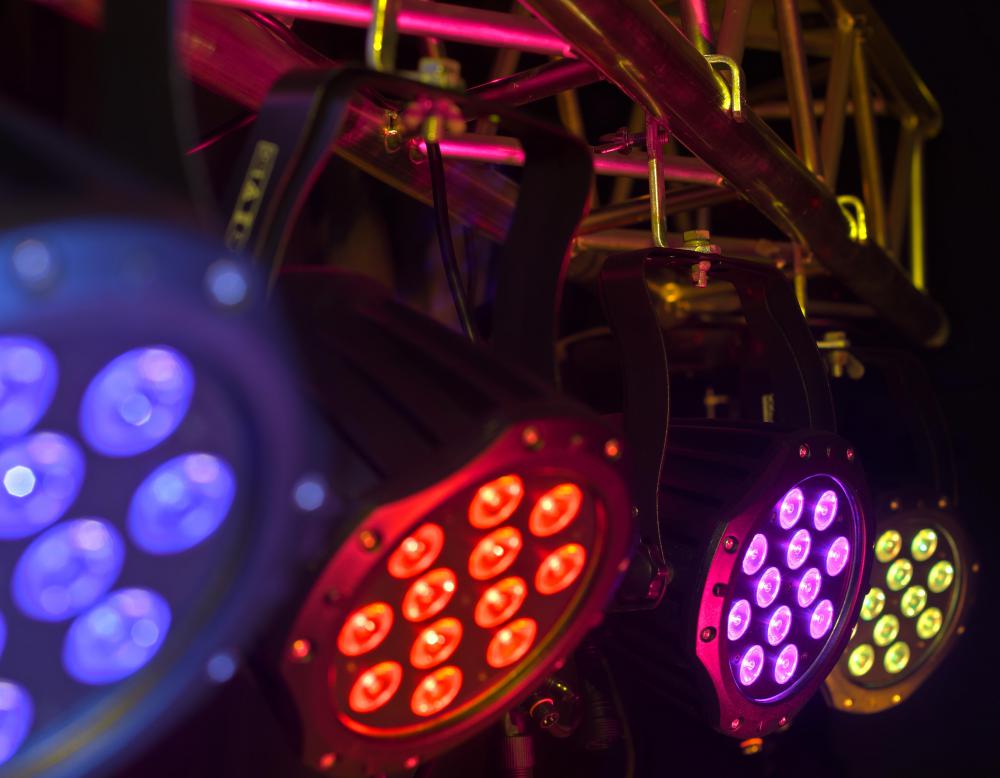At WiseGEEK, we're committed to delivering accurate, trustworthy information. Our expert-authored content is rigorously fact-checked and sourced from credible authorities. Discover how we uphold the highest standards in providing you with reliable knowledge.
What is a Truss Stand?
During just about all types of stage performances, equipment such as lights, speakers, cables, and other accessories are present on stage or above it. In order to efficiently hold these items in place, they are mounted on aluminum supports called trusses. A truss may be mounted in several different ways, depending on the application and the amount of weight being supported; a very portable and easy way to support the trusses is by using a truss stand.
A truss stand is a compact stand generally made of lighter metals like aluminum. The truss stand has a metal bar or system of bars at the top; this is the truss, where lights, cables, etc. can be mounted or run. A truss stand is useful for indoor or outdoor gatherings, performances, and other events in which lighting or sound is necessary. Truss stands are also useful for mounting small to medium backdrops, reflectors, or other performance props.

A truss stand is usually made to fold up for storage. Therefore, they are usually not as heavy-duty as more permanent truss systems. In many theaters and venues, trusses are permanently installed, either by bolting to the ceiling or welding to heavy duty support systems. Larger lights or heavier systems will require a truss system that is heavier duty; a truss stand is a good choice for smaller or fewer lights.
One of the advantages of using truss stands is the ability to quickly and easily adjust the position of lights and accessories mounted to the truss. With larger truss systems, such mobility is possible but much more difficult and time-consuming. Truss stands stay on the ground and can be telescoped up to eight feet (2.4 meters) or more, and they can be dropped down to eye level quickly. This makes dropping the truss easy, so lights and other accessories can be adjusted, added, or removed. Some truss stands use crank levers to raise or lower the stand, making the movement of the stand less strenuous.
Another advantage to truss stands over larger truss systems is cost. Truss stands are significantly less expensive than larger trusses that must be mounted to a supporting system. A decent quality truss stand will be practical for most small to medium lighting applications at a reasonable cost. Even heavier duty truss stands are available; they will be able to hold more weight, but the cost will go up as well.
AS FEATURED ON:
AS FEATURED ON:











Discuss this Article
Post your comments